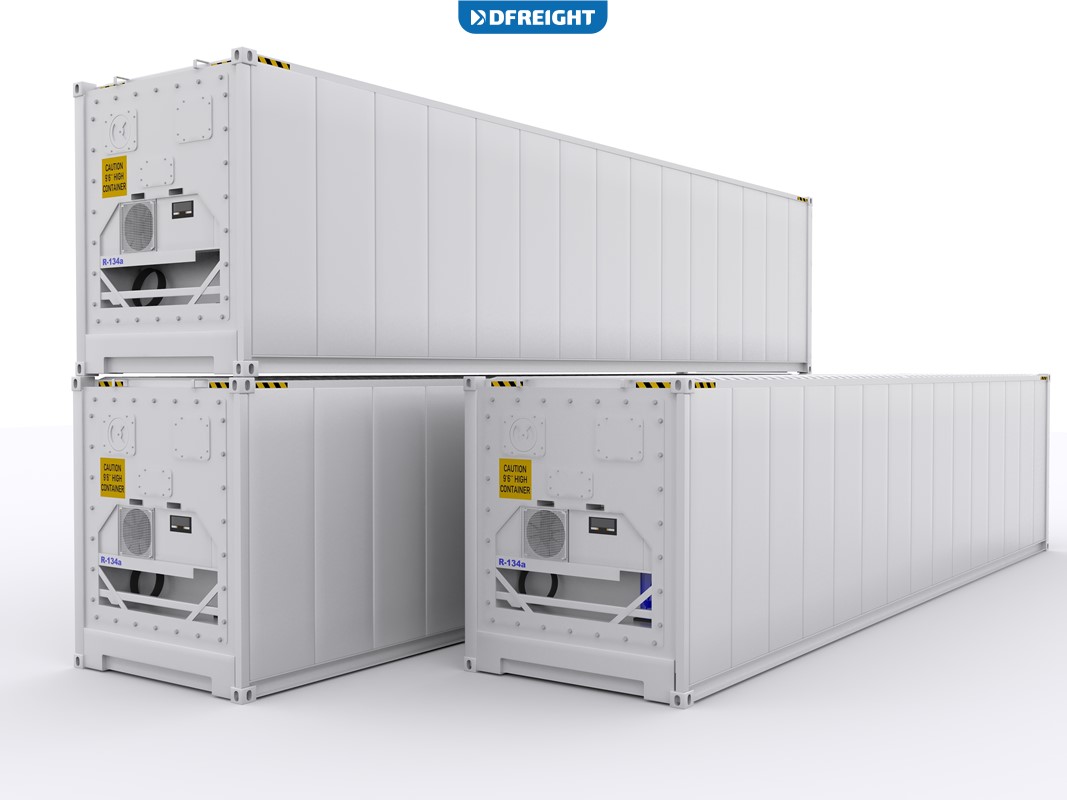Have you ever thought about how it is challenging to ship perishables over long distances inside a country or even between countries on different continents? If they’re not shipped properly and safely, temperature-sensitive products can lead to large losses for all stakeholders in the supply chain. That’s why refrigerated shipping is of the utmost importance for all manufacturers and distributors of perishable goods. This blog post will give an overview of refrigerated shipping, its origins, benefits, and challenges.
Table of Contents
What Is Refrigerated Shipping?
Refrigerated shipping is the process of transporting refrigerated goods from one location to another. This can be done via land, air, or ocean transport. Refrigerated goods are typically perishable goods, such as food or pharmaceuticals, that must be kept at a specific temperature to maintain quality. When shipping these goods, care must be taken to ensure that they remain at the proper temperature throughout the journey. This can be accomplished using special refrigerated containers, reefer trailers, and reefer trucks.
History of Refrigerated Shipping
The first recorded use of refrigerated shipping was in 1876, when a ship called the SS Canopus transported fresh beef from Australia to the UK. The beef was packed in ice and sawdust, and the ship’s hold was cooled by circulating cold air. This method was not very effective, and the beef arrived in a poor condition.
In 1881, a ship called the SS Norge transported live sheep from Australia to the UK. This ship had a more sophisticated cooling system that used ammonia and managed to keep the sheep in good condition.
The first refrigerated cargo ship to cross the Atlantic Ocean was the SS Galtres, which transported beef from Argentina to the UK in 1876. The voyage took two weeks, and the beef arrived in good condition. This success led to the development of more sophisticated refrigeration systems and the growth of the refrigerated shipping industry.
Today, refrigerated shipping is a vital part of the global food supply chain. It allows perishable food items to be transported long distances without spoilage. Refrigerated ships are equipped with sophisticated cooling systems which can maintain a wide range of temperatures. This allows them to carry various food items, such as meat, fish, fruit, and vegetables.
The refrigerated shipping industry has come a long way since the early days of the SS Canopus and SS Galtres. Today, it is a vital part of the global food supply chain, transporting perishable goods worldwide.
The Benefits of Refrigerated Shipping
The benefits of refrigerated shipping are numerous. First, it allows for transporting perishable goods over long distances without the need for preservatives or other methods of extending shelf life. This means that food can be shipped from farms to grocery stores without losing its freshness, and flowers can be shipped from growers to florists without losing their beauty.
Second, refrigerated shipping helps ensure perishable goods’ safety by keeping them at a consistent temperature and preventing spoilage. This is especially important for food items, as spoilage can lead to food poisoning.
Third, refrigerated shipping can save money by reducing the need for last-minute replacements of spoiled goods. This is because the goods are kept fresh throughout their journey, and there is no need to worry about them going bad during the route.
Finally, refrigerated shipping is more environmentally friendly than other methods of shipping perishables, as it eliminates the need for packaging materials that are not recyclable or biodegradable.
The Challenges of Refrigerated Shipping
Shipping food and other perishables can be a challenge, especially when it comes to keeping things cold. Refrigerated shipping is the process of transporting perishable goods at a controlled temperature, typically below 45 degrees Fahrenheit. This type of shipping requires special equipment and careful planning to ensure the goods arrive in the same condition they were sent in.
One of the biggest challenges of refrigerated shipping is keeping temperature-sensitive products at a consistent temperature. This can be difficult to do when the goods are shipped in different vehicles, such as trucks, trains, and boats. The temperature inside the shipping container must also be carefully monitored and controlled. If the temperature gets too high, the goods can spoil.
Another challenge is making sure that the goods arrive on time. Perishable goods can only be shipped for a certain amount of time before they need to be used. This means that the shipping process needs to be carefully planned and coordinated. The route the goods take also needs to be considered, as some routes may be faster than others.
Refrigerated shipping can be a complex and challenging process. However, by carefully planning and coordinating the shipping process, it is possible to ship perishable goods successfully.
Reefers: Key Part of the Cold Chain Industry

Refrigerated containers, also known as reefers, are an integral part of the cold chain industry. Reefers are temperature-controlled containers that are used to transport perishable goods, such as food and pharmaceuticals. Reefers maintain a constant temperature, usually between 0°C and 10°C, through the use of refrigeration units.
The use of reefers allows for the transport of goods over long distances, as well as across borders. Reefers are typically used in conjunction with other cold chain solutions, such as thermal packaging and temperature-controlled warehouses. When used together, these solutions provide a complete cold chain solution, ensuring that goods remain at the correct temperature from the time of production until they reach the consumers.
Are You Looking to Have Your Perishables Shipped?
DFreight is a leading provider of shipping services for various commodities to/from the UAE. We offer a wide range of services to meet the needs of our customers. If you are looking for a reliable and safe shipping service for your temperature-sensitive products, look no further than DFreight. We will ensure that your goods are shipped on time and that you can track their progress throughout the shipping process. Contact us today to find out more about our services.
What Is Refrigerated Shipping?
Refrigerated shipping is the process of transporting refrigerated goods from one location to another. Refrigerated goods are typically perishable goods, such as food or pharmaceuticals, that must be kept at a specific temperature to maintain quality.
What is the origin of refrigerated shipping?
The first refrigerated cargo ship to cross the Atlantic Ocean was the SS Galtres, which transported beef from Argentina to the UK in 1876.
What are the benefits of refrigerated shipping?
There are many benefits to refrigerated shipping, including the fact that it can help to preserve food and keep it fresh for longer. It can also help to prevent the growth of bacteria and other microorganisms that can cause food poisoning.
What are the challenges of refrigerated shipping?
Several challenges come with refrigerated shipping, such as ensuring that the products shipped are properly refrigerated at a consistent temperature during transit. There is also the challenge of ensuring that the products arrive at their destination on time.
What are reefers?
Reefers are temperature-controlled containers that are used to transport perishable goods, such as food and pharmaceuticals.














